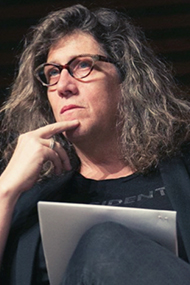

There was Jeffrey, a Jewish man who had yearned to be a bar mitzvah, affirming his heritage, and was able to do so. In “Body Alchemy,” for perhaps the first time, transgender men could see representations of themselves outside of the pages of medical texts. Images of transgender women were more familiar than those of transgender men, and they were often famous figures, like Christine Jorgensen, the American actress whose transition surgery in the 1950s was front-page news, and Jan Morris, the British journalist and travel writer who wrote of her own transition in her 1974 memoir, “Conundrum.” At the time, it was groundbreaking, even radical, to photograph transgender people as regular folk, rather than as exotics or freaks or medical specimens, and rarer still for the lensman to be transgender.

When “Body Alchemy” appeared, it was a revelation. He had been isolated from friends and family for many years, and his death was not widely reported at the time. The cause was suicide, his sister Susan Tarleton said, adding that he had suffered from congestive heart failure. Cameron, a photographer and activist whose depictions of transgender people - and documentation of his own experience - inspired a generation, died on Nov. Cameron wrote of his suit-shopping adventure, “and it wasn’t because of the elevator shoes.” “I felt at least two inches taller when I walked out of there,” Mr. Cameron took a self-portrait in that snappy suit, handsome, bearded and brandishing a bunch of carnations, creating one of many tender and lovely photographs of transgender men like himself that he collected in “Body Alchemy: Transsexual Portraits,” published in 1996. He even offered dating advice: Never give a woman a rose on a first date. Cameron into a double-breasted Italian-made suit, taught him the difference between a half and a full Windsor tie knot, and showed him four variations on folding a pocket square. Cameron put it, and set out to teach him the rituals of fine dressing.

The salesman sized him up “as a regular working-class Joe,” as Mr. He was 5-foot-3 and wanted so much to be bigger, equating masculinity with heft - which is why he was also a dedicated body builder. Loren Cameron was in his early 30s when he went to buy his first suit, walking nervously into unfamiliar territory, a haberdashery for short men.


 0 kommentar(er)
0 kommentar(er)
